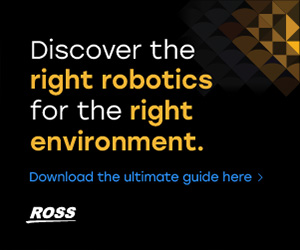Broadcasters balance speed vs quality in content creation

Subscribe to NCS for the latest news, project case studies and product announcements in broadcast technology, creative design and engineering delivered to your inbox.
U.S. adults spend 183 minutes daily watching digital video compared to 132 minutes of traditional television, according to data from Activate Consulting. By 2028, digital viewing time is projected to reach 219 minutes daily, forcing broadcasters to accelerate content delivery while maintaining broadcast standards.
This migration toward digital platforms has fundamentally altered production timelines. Broadcast teams now face compressed deadlines across multiple formats, each requiring distinct technical specifications and quality standards, while viewer expectations for professional quality remain unchanged.
“When it comes to content, more people are doing it; the downside is also that more people are doing it,” said James Gilbert, VP of sales and marketing at Pixel Power. “The barriers to entry have lowered as technology has become more accessible, but this has made for a fragmented landscape where attitudes to quality have been eroded.”
Live content presents the most immediate challenge in balancing speed and quality.
Sports broadcasting, where viewers expect instant replays and highlight packages across multiple platforms, has become a testing ground for this balance. Production teams must simultaneously create broadcast feeds, digital highlights and social media clips–each requiring different quality specifications.
“Depending on content type, speed is everything — especially for sports and news which are realtime or near-realtime content types,” said Jan Weigner, CTO of Cinegy. “For other content types, it becomes more about resources, making automation of tasks as much as possible the ultimate goal.”
Quality standards vary significantly across delivery platforms.
“News segments will have higher sound quality expectations versus picture quality, while live sports broadcasting have high picture, sound, and delivery speed standards,” said Sean Lee, CEO of OpenDrives. These varying requirements force production teams to prioritize different technical aspects based on content type and destination platform.
Technical challenges extend beyond production speed. Performance issues like slow loading times or inconsistent playback across devices can undermine even the highest quality content. These technical considerations have become as crucial as creative elements in determining content effectiveness.
To address these challenges, broadcasters have restructured their workflows.
“Everyone is having to do more with less, yet post-production pipelines are riddled with manual processes and waiting periods,” said Derek Barrilleaux, CEO of Projective. “To derive real value from new technologies, content creators need to first establish a coherent structure for their content creation.”
Automation is key in maintaining quality under tight deadlines.
“We believe that speed and quality don’t have to be mutually exclusive — automation is the key to achieving this balance… Automated solutions reduce manually tedious processes to mere minutes, ensuring precision and creativity remain intact,” said Meghna Krishna, CRO of Magnifi.
“Automation and AI play a crucial role by handling repetitive tasks such as asset tagging, version control, and content distribution, freeing up time for content creators to focus on more creative and value-added tasks,” said Robin Kirchhoffer, CMO of Dalet.
However, industry experts warn against letting speed requirements compromise fundamental quality standards.
“The age old question of why, who for and who cares? AI cannot replace these starting points for storytelling; they will drive the quality,” said Kate Dimbleby, CEO of Stornaway.
Looking ahead, success in broadcasting increasingly depends on establishing sustainable workflows that can deliver content quickly without compromising standards. As viewing habits continue to shift toward digital platforms, the industry must continue adapting production processes that maintain quality across all delivery formats.
Subscribe to NCS for the latest news, project case studies and product announcements in broadcast technology, creative design and engineering delivered to your inbox.






tags
Automation, Broadcast Automation, Broadcast Workflow, Cinegy, Dalet, Derek Barrilleaux, James Gilbert, Jan Weigner, Kate Dimbleby, Magnifi, Magnifi AI, Meghna Krishna, OpenDrives, Pixel Power, Projective Technology, Robin Kirchhoffe, Sean Lee, Stornaway, workflow
categories
Content, Heroes, Online and Digital Production, Social Media, Social Media Video Platforms